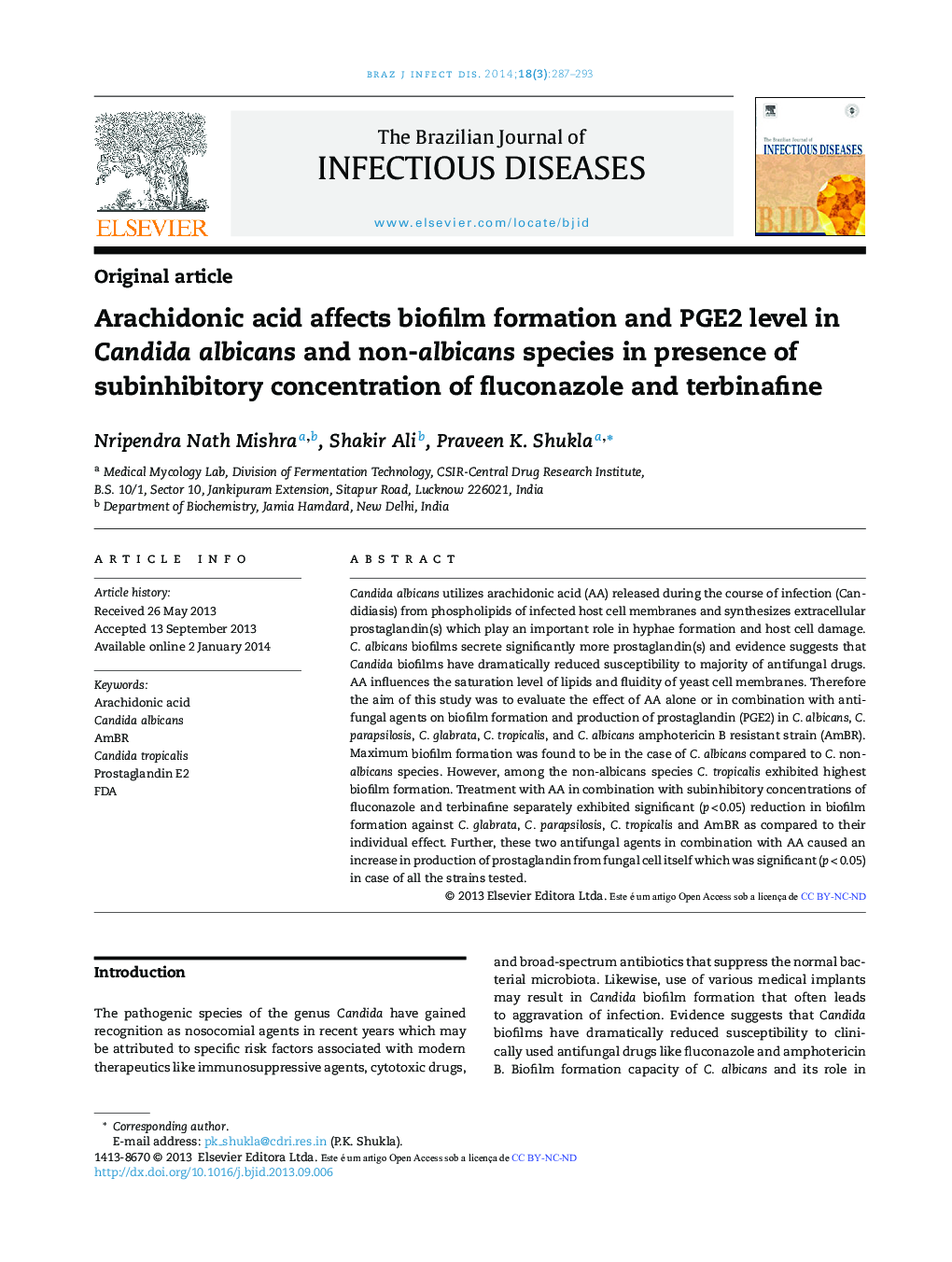| Article ID | Journal | Published Year | Pages | File Type |
|---|---|---|---|---|
| 3344127 | The Brazilian Journal of Infectious Diseases | 2014 | 7 Pages |
Candida albicans utilizes arachidonic acid (AA) released during the course of infection (Candidiasis) from phospholipids of infected host cell membranes and synthesizes extracellular prostaglandin(s) which play an important role in hyphae formation and host cell damage. C. albicans biofilms secrete significantly more prostaglandin(s) and evidence suggests that Candida biofilms have dramatically reduced susceptibility to majority of antifungal drugs. AA influences the saturation level of lipids and fluidity of yeast cell membranes. Therefore the aim of this study was to evaluate the effect of AA alone or in combination with antifungal agents on biofilm formation and production of prostaglandin (PGE2) in C. albicans, C. parapsilosis, C. glabrata, C. tropicalis, and C. albicans amphotericin B resistant strain (AmBR). Maximum biofilm formation was found to be in the case of C. albicans compared to C. non-albicans species. However, among the non-albicans species C. tropicalis exhibited highest biofilm formation. Treatment with AA in combination with subinhibitory concentrations of fluconazole and terbinafine separately exhibited significant (p < 0.05) reduction in biofilm formation against C. glabrata, C. parapsilosis, C. tropicalis and AmBR as compared to their individual effect. Further, these two antifungal agents in combination with AA caused an increase in production of prostaglandin from fungal cell itself which was significant (p < 0.05) in case of all the strains tested.
